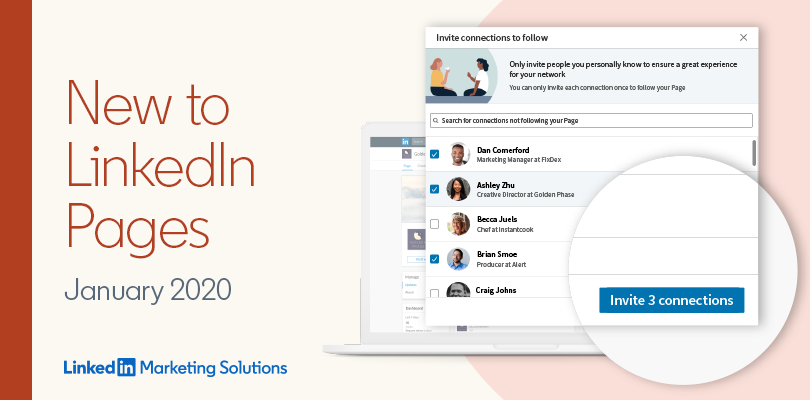As any business professional knows, LinkedIn is a potential goldmine for all sorts of reasons. Not only is it the ideal place to make new connections, but it’s also an essential platform for effective lead generation. That being said, it does take work to make the most out of it. Each element needs forethought and planning. With that in mind, we take a look at how to find LinkedIn Groups to improve your lead gen.
How to Use LinkedIn Groups for Lead Generation
So, first things first, let’s take a look at what Groups are and how you can use them for generating leads on LinkedIn. LinkedIn Groups are like mini hubs on the platform. As LinkedIn terms it, they’re a ‘place for professionals in the same industry or with similar interests to share content, find answers, post and view jobs, make business contacts, and establish themselves as industry experts.’
As you might expect by that description, these can be a huge source of valuable potential customers. However, they can also be spam-filled zones where people practice their sales skills. Finding the right ones can be tricky, and you’ll need the right approach if you’re going to be successful.
Why LinkedIn Groups Matter
There are plenty of benefits that come with hosting or using LinkedIn Groups. Whether it’s to find and connect with other professionals or demonstrate your industry knowledge, you can take advantage of them. Here are some of the ways in which these mini networks matter:
- You can find out about industry news and events
- There are people willing to have a conversation about relevant topics
- You’ll have plenty of opportunities to contribute and share content
- They give you the option to connect with professionals in your industry
As you can see, these are some fairly unique advantages that aren’t often found elsewhere. What’s more, rather than sending a LinkedIn InMail, you can connect directly with potential leads.
Groups for Lead Generation
Any salesperson reading this is probably desperate to start tapping this valuable resource, and rightly so. The lead gen opportunities in groups of LinkedIn are vast. However, you’ll need to know what you’re doing if you’re going to be successful.
There are some steps you should take when you’re trying to drum up new business through this feature. It’s not quite as straightforward a process as when you export Sales Navigator leads, for example. You’ll need to take a soft and measured approach:
- Find the right type of Group and request to join (see the next section)
- Gradually get a feel for what the Group is about and how people operate, paying close attention to any community rules.
- Spend some time commenting on posts and content that you know a lot about, but don’t spam sales content.
- Create content and share information that you think will be relevant and useful to the Group.
- Gently introduce your service/product if you think it will bring genuine worth to someone in the Group.
Finding the Right LinkedIn Groups: Step by Step
So, now that we know what Groups on LinkedIn are and how they can help with lead gen, let’s take a look at how to find them. There are two parts to this – joining a group and finding the right ones:
How to Join a Group
- You can search for the group name or keywords relevant to it. In the search bar, select Groups and enter the keyword/name.
- LinkedIn recommends groups relevant to you. From the Work icon, you can select Groups and click Search.
- After navigating to a Group’s homepage, you can Request to join. You can also join if you’ve received an invitation from the group manager or another member.
Finding the Right LinkedIn Groups
Each Group has its own information section, which gives you an insight into what they’re all about. Of course, your Discover function will give you some of the most relevant Groups to your particular niche. This is usually a fairly accurate way of discovering new opportunities.
You can also use keywords to search, and this is often a successful way of finding specialist Groups in your area of expertise. Try searching on things like job titles, interests, and even broader industry terms.
Final Thoughts
Clearly, Groups on LinkedIn can be a valuable source of new leads. However, those with an agenda to push as quickly spotted and disregarded. The only way to get the most out of these opportunities is to spend the time investing in the Group. Join the conversation, share your expertise, and foster new relationships.
FAQs
Below, we’ve answered some of the most frequently asked questions about Groups:
How do I find my Groups on the LinkedIn app?
First, click on your profile picture and navigate to the ‘Interests’ section. From here, click ‘See more’ and scroll down to the Groups section. Here, you can select See all Groups.
What Groups should I join on LinkedIn?
You should join Groups that are relevant to your industry. Also, make sure that you can contribute to the discourse on whichever ones you join.
Are LinkedIn Groups public?
No, they are by invite only. You can find each one in search, but must be invited by a Group member or manager. Alternatively, a member can send you an invite link, which takes you straight to the page
How to join Groups on LinkedIn
After finding the Group you want to join, you can click on the ‘Request to join’ button. This will send a notification to the group admin.
How to start a LinkedIn Group
After navigating to the Groups page, you can easily create a new Group by following the instructions. It gives you a step-by-step explanation of how to set up your Group and start adding members.
How to search for Groups on LinkedIn
In the main search bar, you can set your search options to only search for Groups. Then simply enter the keywords/phrases you wish to look for.




 How to Find Your LinkedIn SSI Score
How to Find Your LinkedIn SSI Score 
